In the unfolding chessboard of 21st-century geopolitics, fighter jets are no longer just machines—they’re symbols of power, pride, and digital diplomacy. For nations outside the U.S. or Russian sphere, the choice is sharp: pick America’s F‑35 Lightning II—a polished showroom jet with a billion-dollar upkeep and a hidden kill switch—or opt for Russia’s Su‑57 Felon, less refined but loaded with stealth, sovereignty, and zero fine print. This is the real-world showdown: F‑35 vs Su‑57—the billion-dollar blunder meets the predator.
- Avionics – The Digital Brains
- Communication & Encryption
- Radar Systems
- Electronic Warfare & Pilot Gear
- Materials & Maintenance
- Weapons Integration
- Speed, Range, Fuel
- Integration & Training Ecosystem
- Combat Credibility
- Export Politics
- F‑35 vs Su‑57 Cost Comparison
- F‑35 Unleashed: See the Jet That Costs a Fortune
- Media & Public Memes
- Software Sovereignty
- F‑35 vs Su‑57 Global Export Analysis
- Real-World Implications
- The 6th & 7th Gen Race – Flashy Promises, Fuzzy Specs
- F‑35 vs Su‑57 Final Verdict: Which Fighter Jet Gives You Control?
- F‑35 vs Su‑57: FAQs 2025 Edition
- Q1: Why is software sovereignty a key issue in the F‑35 vs Su‑57 debate?
- Q2: Which jet offers more freedom in weapons integration—F‑35 or Su‑57?
- Q3: Is the F‑35 worth its $1.5 trillion lifetime cost?
- Q4: How does India benefit by avoiding both F‑35 and Su‑57?
- Q5: What makes the F‑35 vs Su‑57 comparison relevant in 2025?
Avionics – The Digital Brains
The F‑35 vs Su‑57 contrast begins at the brain—how each jet sees, thinks, and fights.
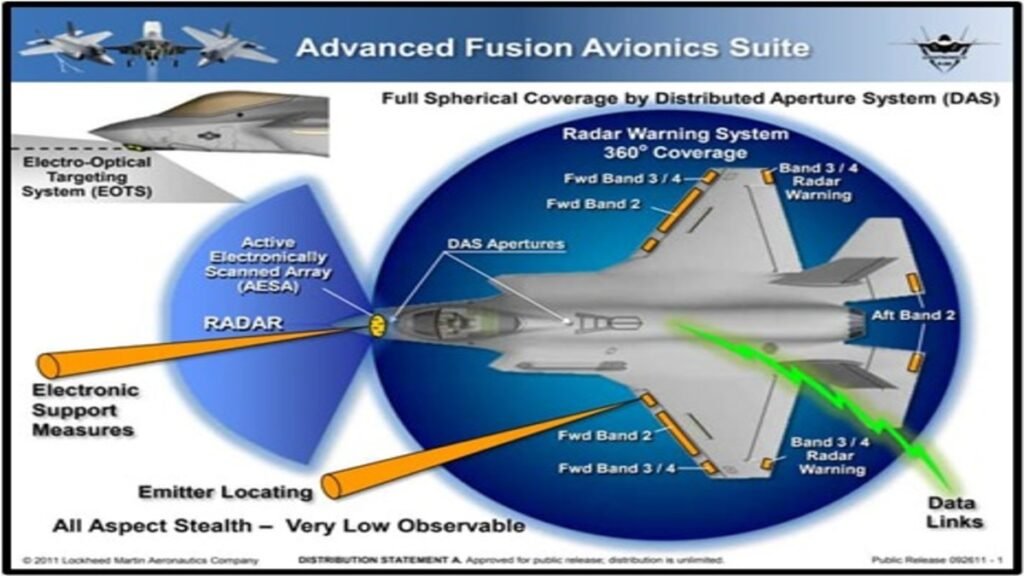
F‑35: Features the Integrated Core Processor (ICP)—a supercomputer processing 8 million lines of code. The AN/ASQ‑239 EW suite, DAS (Distributed Aperture System), EOTS (Electro-Optical Targeting System), and communication systems are fused into a single mission interface. Helmet lets pilots see through the aircraft body in real time. But the source code? Locked in Virginia. Nations fly it—but don’t own it.
Su‑57: Uses IMA BK (Integrated Modular Avionics) with the SH121 system that integrates mission logic, radar processing, and navigation. Tracks over 60 targets, engages 16 simultaneously. Open architecture allows users to integrate domestic fire control systems or indigenous EW packages. Like Linux—modular, adaptable, but not for amateurs.
Communication & Encryption
F‑35: Equipped with MADL (Multifunction Advanced Data Link) for stealth comms among F‑35s and Link-16 for backward compatibility. SATCOM provides secure beyond-line-of-sight connectivity. But data is relayed via U.S.-controlled servers—meaning the aircraft is always in sync with its landlord.
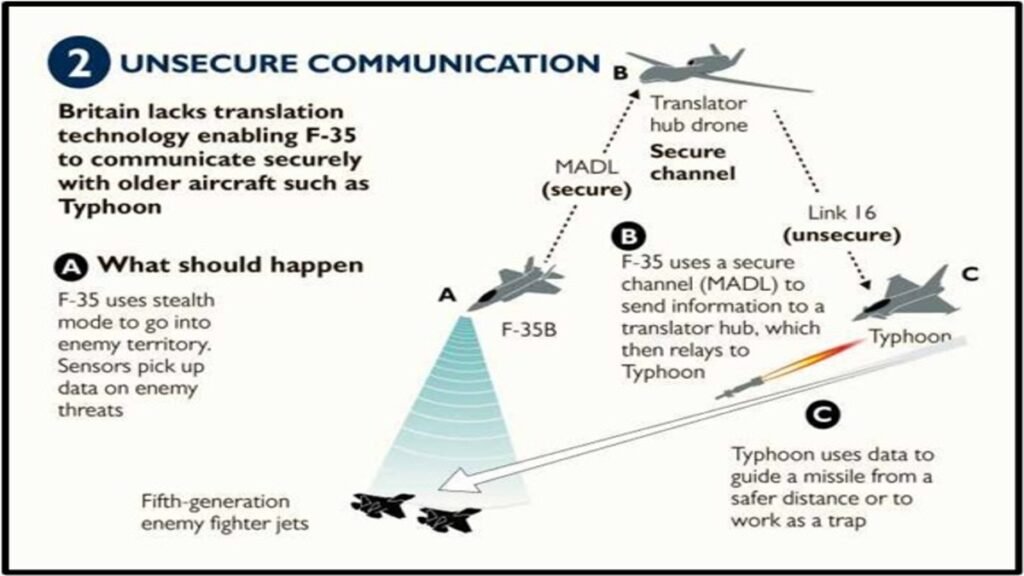
Su‑57: Features the S‑111 encrypted radio suite and an indigenous IFF (Identification Friend or Foe) system. Export clients can request custom encryption keys, removing dependency on foreign oversight. No MADL, no surveillance—just direct, sovereign comms.
Radar Systems
When it comes to radar philosophy, the F‑35 vs Su‑57 debate reveals a contrast in design logic.
F‑35: Uses AN/APG‑81 AESA radar, offering SAR imaging, passive tracking, and electronic attack capabilities. Fully integrated with DAS and EW for multi-aircraft data sharing—but only within the F‑35 ecosystem. Ideal for coalition warfare; useless for standalone operations.
Su‑57: Carries the N036 “Byelka” radar suite:
- X-band AESA in the nose cone
- L-band AESA in wing edges (ideal for detecting stealth shapes)
- Side-looking AESAs for wide-angle tracking
Multi-band radar fusion enhances survivability in anti-stealth environments. Less integrated, but tactically versatile.
You can’t depend on your eyes when your imagination is out of focus
Mark Twain
Electronic Warfare & Pilot Gear
F‑35: AN/ASQ‑239 EW suite detects radar, IR, and RF threats; capable of DRFM-based jamming. The Gen III HMDS helmet integrates 360° HUD, radar feed, and NVG—all for ~$400,000. Every action is logged and streamed to U.S. servers. Flying the F-35 is more like sitting inside Iron Man’s HUD, only with increased lag and fewer jokes.
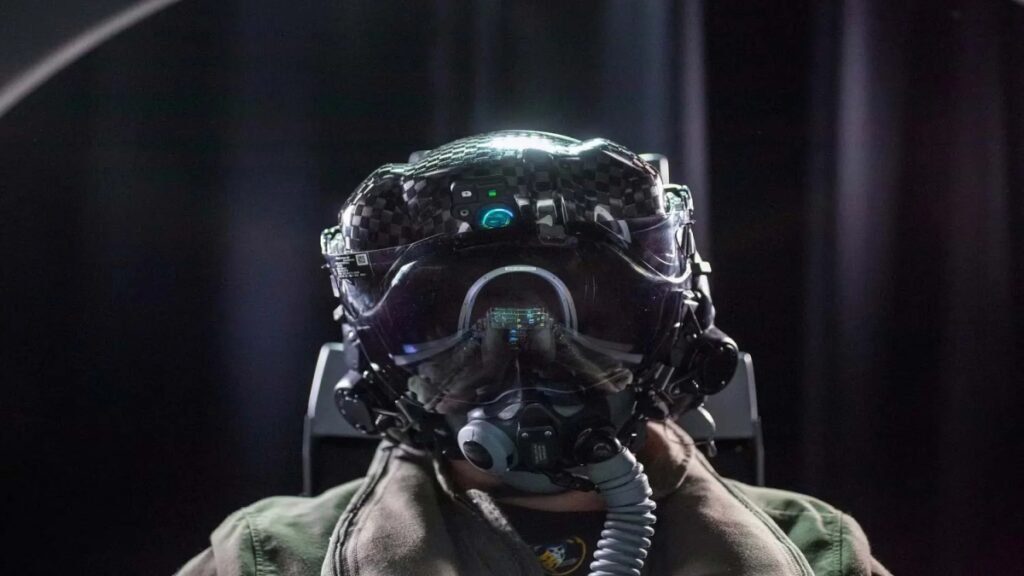
Su‑57: KRET EW suite includes missile approach warning, jamming, and countermeasure deployment. Cockpit features panoramic touchscreen MFDs, voice command, and IR-overlay HUD. High agility, wide field of view, and better long-sortie comfort—survivability over showbiz.
Materials & Maintenance
F‑35: Made with titanium alloys, carbon fiber composites, and epoxy-bonded RAM coatings—all enhancing stealth and aerodynamics. But RAM coatings degrade under sunlight, rain, sand, or salt air. Repairs must go through Lockheed-approved facilities. Global supply chain spans Italy, Australia, UK—one sanction, and you’re grounded. It’s like owning a Lamborghini that needs to be serviced in seven countries before every race.
Su‑57: Built from ~45% titanium, aluminum-lithium alloys, and 25% composites. Emphasizes structural strength and field serviceability. Utilizes plasma-stealth, internal bays, and angular shaping instead of fragile coatings. Modular parts allow rough runway testing and faster maintenance cycles.
Weapons Integration
In the F‑35 vs Su‑57 debate, weapons flexibility is a sovereignty test.
F‑35‘s Internal stealth loadout:
- 2× AIM‑120D AMRAAM (160–180 km range)
- 2× GBU‑31 JDAM or GBU‑39 SDB
“Beast Mode” enables 6 external hardpoints for up to 14 weapons—but sacrifices stealth. Integration of indigenous weapons (e.g., Astra, Rudram) requires U.S. DoD approval and Lockheed certification.
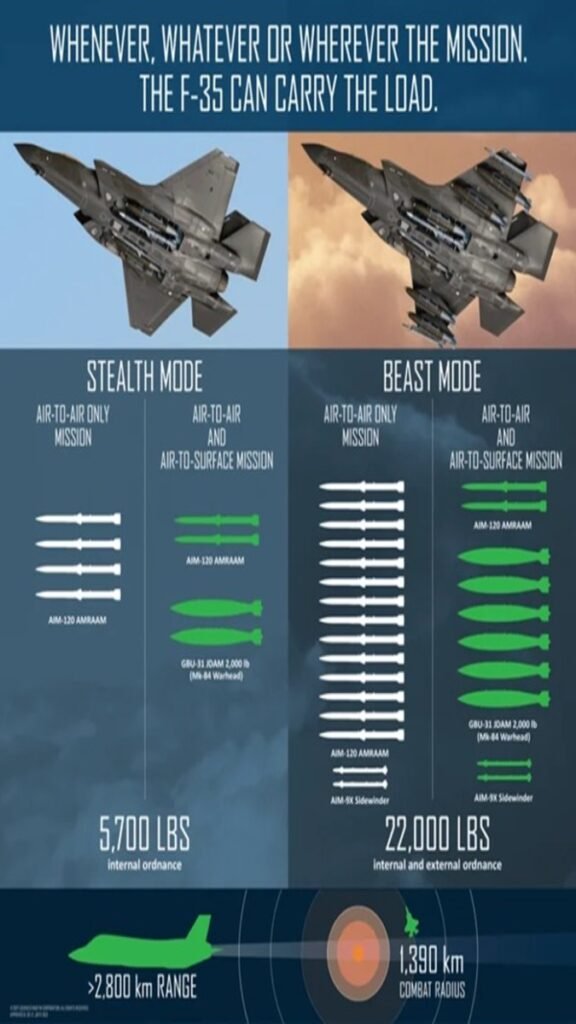
Su‑57 Carries:
- R‑77M: radar-guided missile with AESA seeker
- R‑74M2: high-agility IR missile
- Kh‑59MK2: stealth cruise missile
- FAB glide bombs (planned)
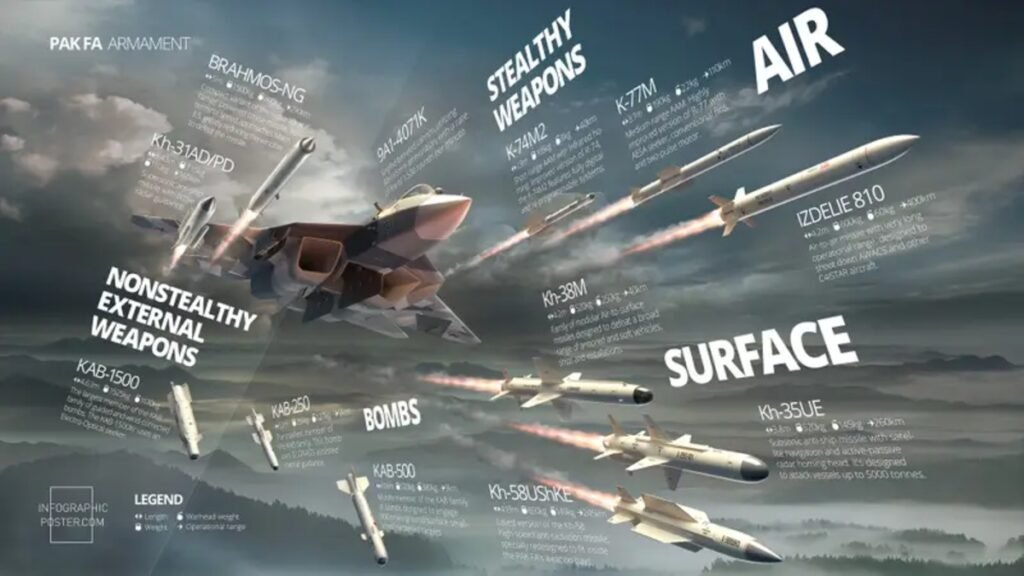
Future weapons: Kinzhal-type hypersonics, Grom standoff munitions, AI-guided swarms. Export customers can modify fire control logic and integrate domestic weapons without Kremlin interference.
🔗 Compare Russian vs American Firepower: Tech, Strategy & Global Impact
Speed, Range, Fuel
| Metric | F‑35A | Su‑57 |
|---|---|---|
| Top Speed | Mach 1.6 | Mach 2.0 |
| Internal Fuel | ~8,382 kg | ~10,300 kg |
| Combat Radius | ~670 nm | ~680–800 nm |
Su‑57 wins in fuel, speed, and endurance, optimized for longer-range strikes and non-NATO operational doctrine.
Integration & Training Ecosystem
F‑35: Designed as a networked war node. Syncs with Aegis, AWACS, UAVs, and artillery via MADL and Link-16. Comes with AI-based mission planning, ODIN logistics system, and centralized data streams. But even your VR simulator data is U.S.-logged.
Su‑57: Integrates with S‑400/S‑500, Iskander-M, Kinzhal, and S‑70 Okhotnik-B drones via Russia’s proprietary C4I protocols. Export clients receive full-motion simulators, onsite training, and data stays sovereign. India’s earlier FGFA plans even explored custom cockpit layouts and ergonomic controls.
Combat Credibility
F‑35: Operated by 15+ Western nations. Has flown real sorties, notably in Syria. Highly featured in Red Flag, Joint Warrior, and other joint drills. Heavily choreographed, heavily publicized.
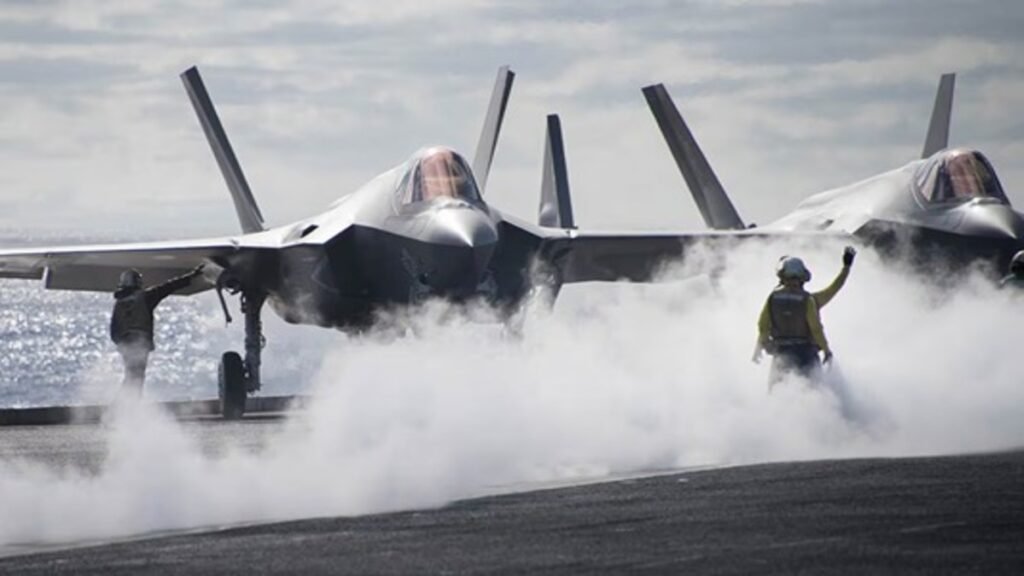
Su‑57: First combat trials in Syria (2018). Under 15 units delivered, but newer iterations (post-Ukraine) claim enhanced survivability and sensor upgrades. Less marketing, more potential—pending full validation.
Export Politics
The F‑35 vs Su‑57 export landscape is a lesson in who really owns your air power.
F‑35: Comes with interoperability strings. U.S. retains control over updates, integration, and even fleet usage. Turkey got kicked for buying S‑400s. Buyers effectively lease capability on Washington’s terms.
Su‑57: Russia offers full system access, including co-production (seen in earlier India FGFA talks). Delay-prone, but flexible. Buyers like Algeria, Vietnam, India see it as a step toward autonomy.
F‑35 vs Su‑57 Cost Comparison
| Category | F‑35A | Su‑57 |
|---|---|---|
| Unit Cost | ~$80M | ~$35–45M |
| Ops Cost/Hour | ~$36,000 | ~$10,000–15,000 |
| Lifecycle (30 yrs) | $1.5T+ | TBD |
F‑35: A technical marvel with a financial leash.
Su‑57: Economical, sovereign—but not industrially scaled yet.
F‑35 Unleashed: See the Jet That Costs a Fortune
Media & Public Memes
F‑35: Poster child of Pentagon PR. But also Reddit’s tragicomedy. Known for helmet glitches, oxygen issues, and even the #KeralaTourism radar ping. Lockheed’s PR crisis list reads longer than its tech manual.
🔗 Read the full story on the latest F‑35 crash
Su‑57: Largely silent. Russian state media glorifies; Western analysts remain skeptical. But in India, Algeria, and Vietnam, it’s gaining respect—for the one thing it offers most: freedom from digital leash.
Software Sovereignty

F‑35: No source code access. Mission data files compiled in the U.S., rumored “kill switches” exist, backed by whistleblowers. Even target parameters are U.S.-defined. You bought the jet—but Washington holds the remote. You bought the jet, but Uncle Sam holds the remote control.
Su‑57: Allows source code access (on terms), customizable software stack. Users can tweak EW logic, missile libraries, and targeting algorithms. More risk, more freedom—your war, your terms.
F‑35 vs Su‑57 Global Export Analysis
Each nation’s experience adds a chapter to the F‑35 vs Su‑57 playbook—some scripted, others redacted.
UAE: Wooed both sides. Signed Abraham Accords for F‑35, but got ghosted by Washington over China ties.
Turkey: Once a core F‑35 partner. Bought S‑400. Got booted. Now eyeing Su‑57 and building TF-X.
India: Joined, then left the FGFA. Rejected F‑35. Building AMCA instead—patient and sovereign.
Vietnam & Algeria: Quiet interest in Su‑57—avoiding NATO gatekeeping.
Israel, Japan, SK: F‑35 users with privileges—but under close U.S. watch.
Real-World Implications
Israel, Japan, South Korea: All operate F‑35A variants—but within Washington’s fenced garden. Even Israel’s famous “customized” F‑35I Adir still requires backdoor U.S. approval for weapons integration. Weapon loadouts, mission profiles, and avionics access remain tightly supervised, reinforcing the idea that you’re flying leased sovereignty.
India’s Dilemma: F‑35 offers advanced fused-sensor performance, but wouldn’t carry Astra, BrahMos-NG, Rudram, or even India’s SAAW without U.S. permission slips and full-spectrum integration trials. The Su‑57, though less networked, is flexible enough to permit integration of indigenous weapons via open mission architecture—or serve as a test bed for AMCA-style autonomy.
Turkey: Once a major Tier-3 F‑35 industrial partner, got expelled for buying the Russian S‑400 system. The irony? It now eyes the Su‑57—which doesn’t come with EULA clauses or “click here to accept American foreign policy” buttons.
The 6th & 7th Gen Race – Flashy Promises, Fuzzy Specs
USA’s and UK‘s:
- NGAD (Next Gen Air Dominance): AI copilots, adaptive engines, drone swarm command
- Tempest: UK-Japan-Italy sixth-gen jet with laser weapons, full spectrum stealth, and cloud-integrated warfare
Both have blank cheques and black budgets, with first flights still years away.
Russia:
- Working on Su‑75 Checkmate (cheaper, export-friendly 5th-gen light fighter)
- Rumors of Su‑XX modular 6th-gen platform
Progress: slow, modular, unclear—but sovereign.
India:
- AMCA Mk2 to feature 6th-gen capabilities: directed energy, AI wargaming, loyal wingmen (CATS Warrior). 🔗 Explore India’s AMCA Project: Specs, Timeline & Sovereignty Goals
- Ghatak UCAV: Autonomous stealth drone with internal bays
Learning curve steep—but path is real. Less talk, more R&D.
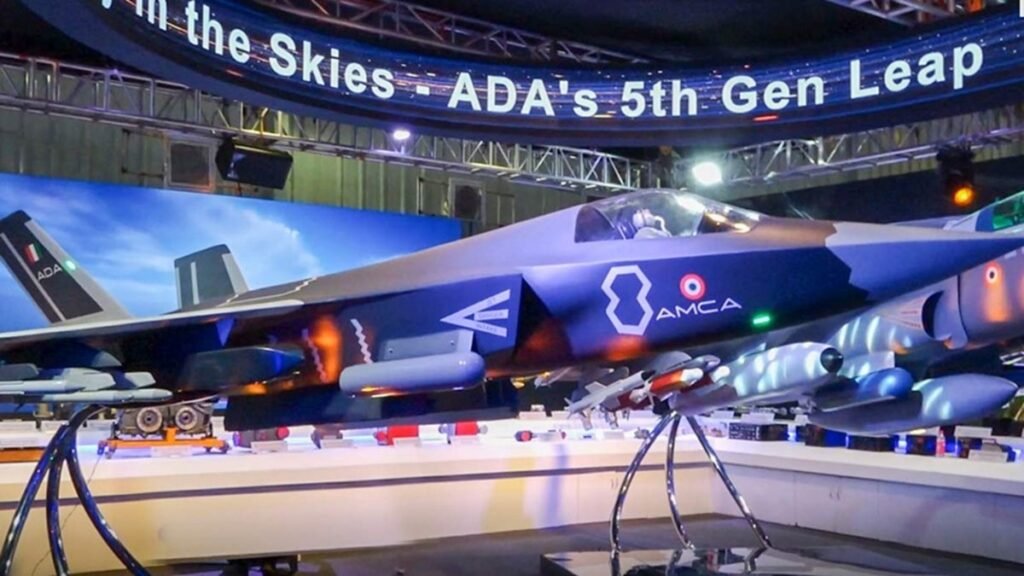
🔗 Explore India’s AMCA Project: Specs, Timeline & Sovereignty Goals
China:
- Claims of 7th-gen fighters with quantum radar, plasma stealth, and unified space-air-sea roles
Most of it sounds like anime meets PowerPoint. Global analysts remain skeptical.
🔗 Inside China’s 7th-Gen Fighter: Hype, Claims & What We Know So Far
F‑35 vs Su‑57 Final Verdict: Which Fighter Jet Gives You Control?
F‑35:
- Advanced systems, yes
- Proven platform, yes
- But you’re flying on Washington’s API license. Want to carry a BrahMos? Submit a form. Want software updates? Wait for their Tuesday patch cycle.
It’s not a purchase—it’s an ongoing compliance program.
Su‑57:
- Less polished
- Less plugged-in
- But it won’t phone home to Moscow every time you target something.
Integrate your own missiles, recode your EW, modify your MFDs.
It’s the aviation equivalent of open-source sovereignty. Your sky, your rules.
F‑35 vs Su‑57 Wrap-Up: iPhone vs Linux in the Skies
In future skies, true stealth won’t just be radar evasion—it’ll be invisible influence. And for those who still believe that freedom is more important than firmware, the right fighter isn’t just about specs—it’s about self-respect.
- F‑35 = iPhone: Stylish, closed, works only if you agree to all the terms
- Su‑57 = Linux: Complex, powerful, customizable if you know how
For most nations, neither jet is perfect—but both offer strategic depth. The final choice depends not on the airframe, but on what kind of airpower philosophy a nation chooses to embrace.
And the sky? It belongs to those who dare to fly their own flag.
F‑35 vs Su‑57: FAQs 2025 Edition
Q1: Why is software sovereignty a key issue in the F‑35 vs Su‑57 debate?
A: Software sovereignty defines who controls mission data, target libraries, and system upgrades. The F‑35 keeps source code and mission files locked in the U.S., limiting user autonomy. The Su‑57, on the other hand, offers customizable access—letting buyers tweak fire control systems, EW logic, and more. In modern warfare, owning the code is owning the kill chain.
Q2: Which jet offers more freedom in weapons integration—F‑35 or Su‑57?
A: The Su‑57 clearly leads here. It allows integration of domestic weapons like BrahMos, Rudram, and Astra with Russian collaboration. The F‑35 requires approval from the U.S. Department of Defense, and even allies face red tape. If freedom matters, the Su‑57 is the sovereign’s choice.
Q3: Is the F‑35 worth its $1.5 trillion lifetime cost?
A: The F‑35 offers unmatched stealth, network integration, and sensor fusion—but at a steep financial and political cost. Its $80M unit price and $36K per-hour operational cost make it a budget guzzler. The Su‑57 is far more economical, albeit less industrially scaled. For many, the cost of control is the real price tag.
Q4: How does India benefit by avoiding both F‑35 and Su‑57?
A: India’s focus on AMCA (Advanced Medium Combat Aircraft) means building stealth fighters with full local control—combining F‑35-like fusion tech with Su‑57 agility. It enables integration of Indian weapons and AI systems without foreign kill switches. It’s a long road, but one leading to true defense autonomy.
Q5: What makes the F‑35 vs Su‑57 comparison relevant in 2025?
A: As global defense pivots to AI, software warfare, and multipolar alliances, the F‑35 vs Su‑57 question isn’t just technical—it’s geopolitical. The F‑35 represents alignment with U.S. doctrine and restrictions. The Su‑57 offers flexibility and self-reliance, especially for countries resisting NATO influence.




